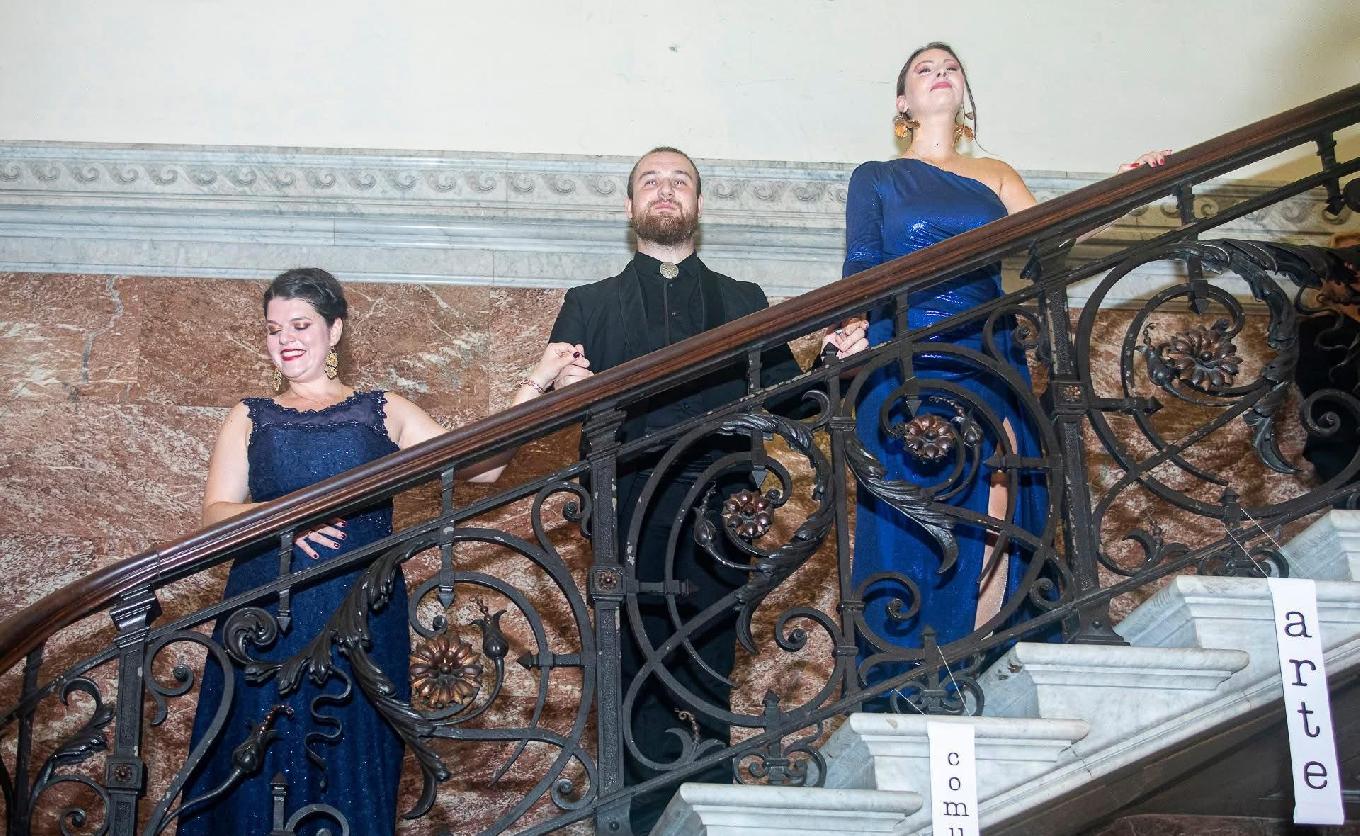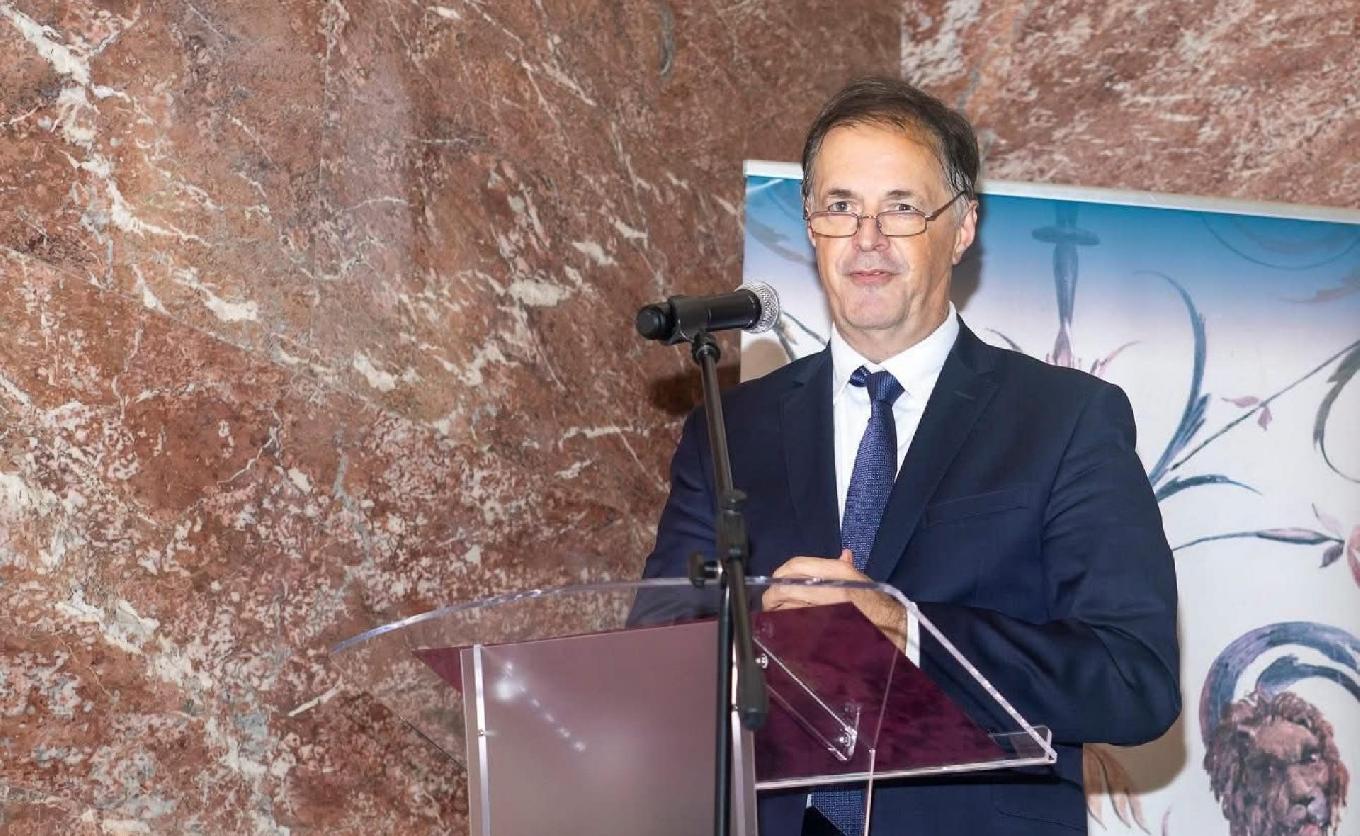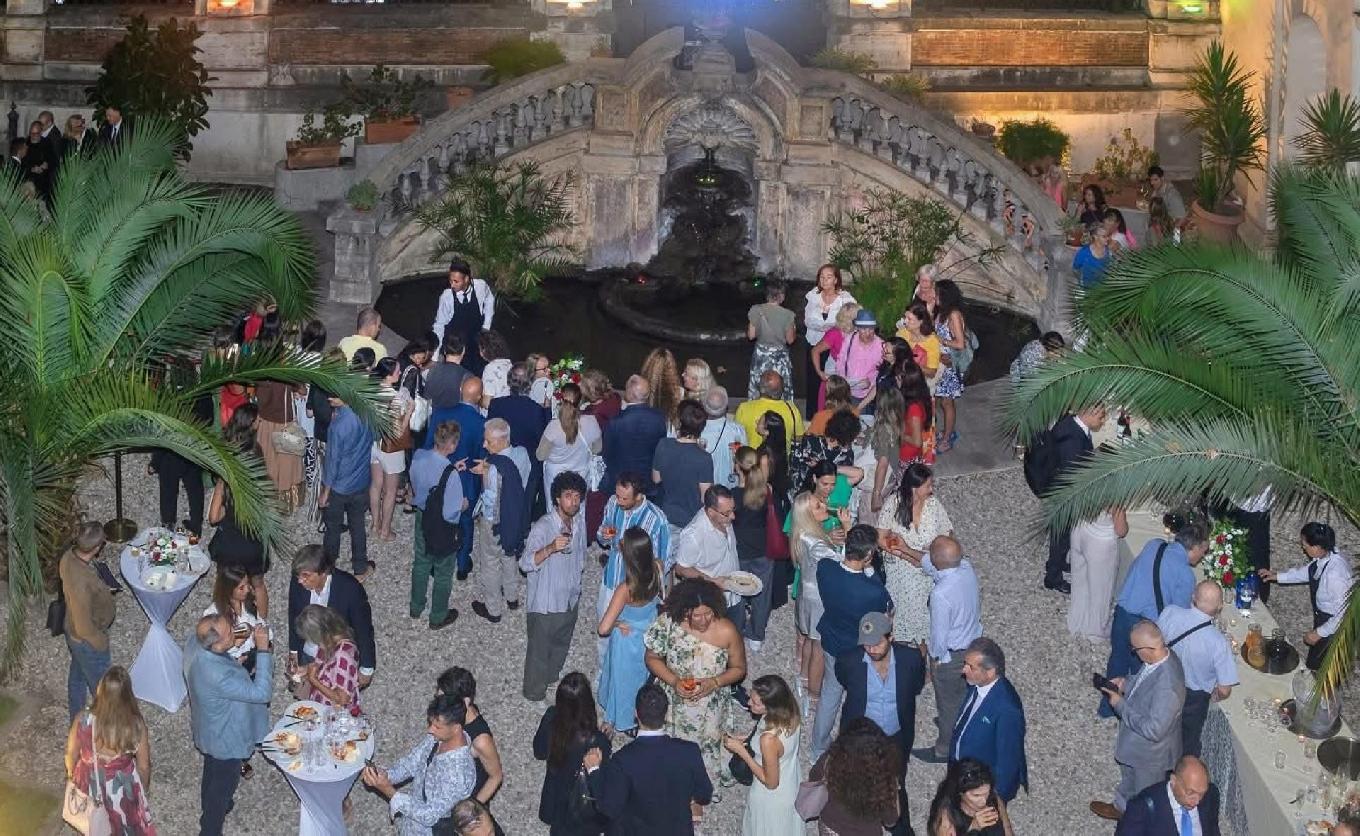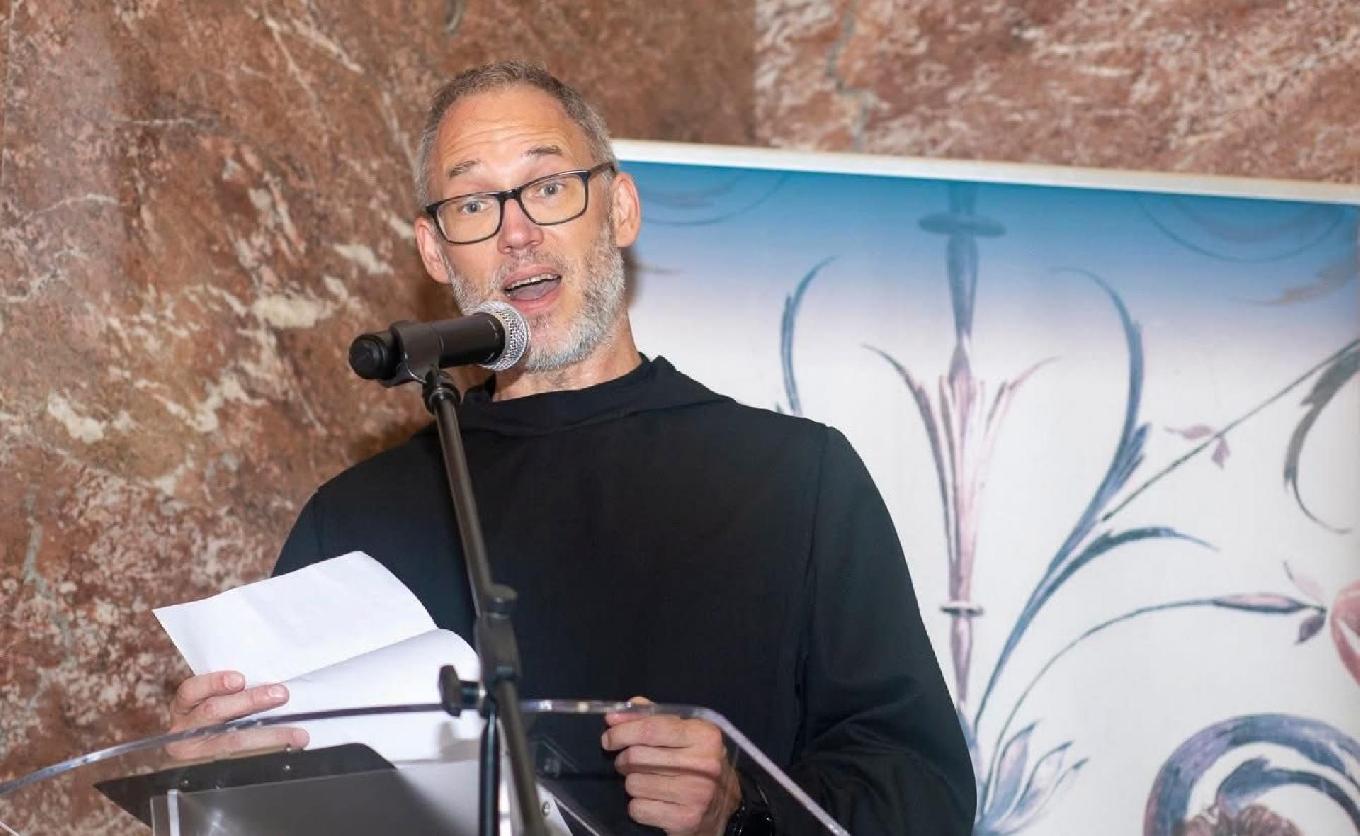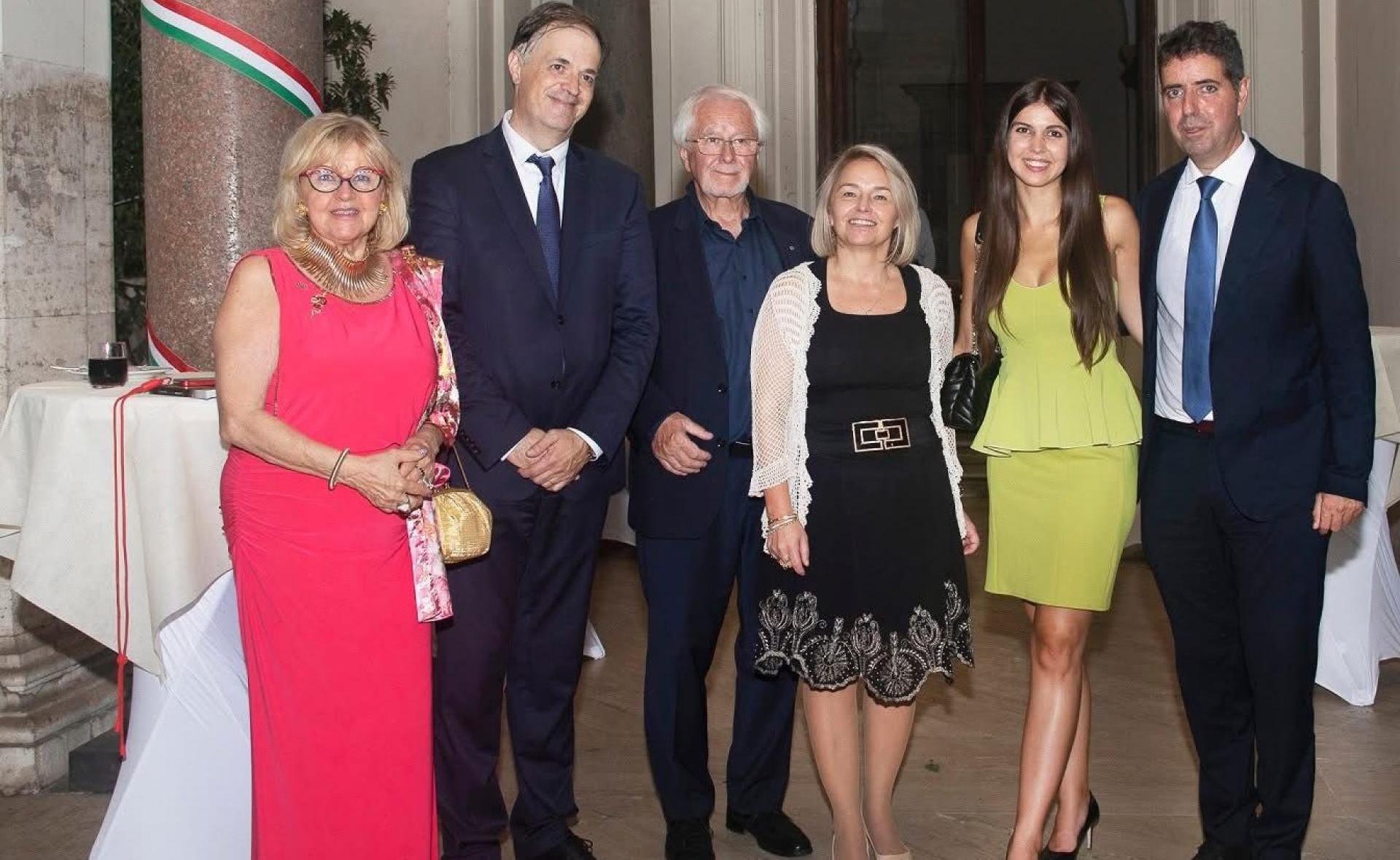
The Hungarian Academy in Rome Opened the Season with Three New Exhibitions
On September 18, 2025, the Hungarian Academy in Rome held its season-opening ceremony amidst outstanding public interest, with Italian, Hungarian, and international public figures in attendance. At this special event, combined with a reception, three new exhibitions were inaugurated, where the visual arts met high-quality musical performance. During the vernissage, the welcome speeches were accompanied by opera arias performed by the students of Kvintesszencia, the music school founded by world-renowned soprano Erika Miklósa.
At the season-opening ceremony, following the welcome words of Acting Director László Berényi, speeches were delivered by Dr. Krisztina Lantos, Ministerial Adviser at the Ministry of Culture and Innovation; Gábor Csaba, Deputy State Secretary responsible for cultural diplomacy; Konrád Dejcsics OSB, Cultural Director of the Archabbey of Pannonhalma; Zoltán Rátóti, Vice President of the Hungarian Academy of Arts; and Judit Cziráki, President of the Amerigo Tot Foundation. The evening’s distinguished guests included: Anna Fendi, founder of the Fendi brand and an icon of the fashion world; Countess Erika Fodré; Mihály Szentmártoni, Jesuit emeritus university professor; István Madarassy, Kossuth Prize-winning sculptor; Sándor Buglya, Balázs Béla Prize-winning Hungarian film director; Maurizio D’Alessandro, Director of the Liszt Festival in Albano; Mirko Soto Sapriza, First Secretary of the Embassy of Paraguay to the Holy See; Sec. Denise Preguica Bozic, Cultural Attaché of the Argentine Embassy; Dr. Daniele Bruno, President of the John Paul II Foundation; Consul Csilla Papp; Dóra Zakar, Economic Attaché; Dr. Lotti Szücs, Head of the Strategic Department for Cultural Diplomacy at the Ministry of Culture and Innovation; Dr. Fabio de Chirico, Director of the Italian Central Institute for Graphics; and Dario Evola, Associate Professor at the Italian Academy of Fine Arts. In addition, numerous Roman journalists, curators and artists from the American Academy and the Danish Academy, as well as Erasmus scholarship students studying in Rome, attended the celebration.
In the gallery of the Academy, the memorial exhibition titled “Life Paths – Sándor Rétfalvi, Sándor Kígyós, Pasquale Nini Santoro, and Amerigo Tot” presents artists for whom Amerigo Tot played a defining role both in their creative work and in their friendships, and who rank among the most significant figures of 20th-century Hungarian sculpture. The exhibition is complemented by the sculptures of their Roman contemporary, Pasquale Nini Santoro. The oeuvres of Rétfalvi and Kígyós are closely tied to the history of Italian-Hungarian relations and to the Academy itself: both spent multiple scholarship periods at the Hungarian Academy in Rome. This selection simultaneously evokes the traditions of Hungarian sculpture and pays tribute to the artistic connections between Italy and Hungary.
The exhibition Division 10 x 10, curated by the Benedictine community of the Archabbey of Pannonhalma—which combines spiritual life with education and cultural activity and has already been successfully presented in Hungary—guides visitors further into the grand staircase on the first floor. Through around 50 photographs and ten personal stories, it presents portraits of everyday heroes who turn selflessly toward their fellow human beings. In this testimony, the spiritual legacy of Saint Martin comes alive, who was a protector of the poor and the needy throughout his life. In his welcome speech, Gábor Csaba emphasized: “In the poem It Is Not I Who Shout, Attila József writes: ‘In vain you bathe in yourself, only in another can you wash your face.’ These lines—the responsibility toward others, the elevation of the soul through helping and protecting one another—resonate deeply with the message of the Division 10×10 exhibition. In the photographs reminiscent of modern-day icons, the quiet dignity of service, the pulsating force of life, and the experience of pain appear side by side, together providing an authentic image of the hidden heroism of everyday life.”
The third exhibition, organized by the Hungarian Academy of Arts, is titled “Heaven and Earth on Stage”. This exhibition presents the unique world of Baroque-era Jesuit school dramas and mystery plays, focusing in particular on the stage designs connected to the educational activities of the Jesuit order. Its foundation is the Jesuit stage-design book from Sopron, which has preserved the set plans and visuals of school dramas once performed. These designs are now on view in the form of an open-air banner exhibition, authentically evoking the atmosphere of Baroque theatre.
Visitors praised the high-quality exhibitions and expressed their hope that, throughout the year, similarly exciting and vibrant shows and other special artistic productions would await them at the Hungarian Academy in Rome.

